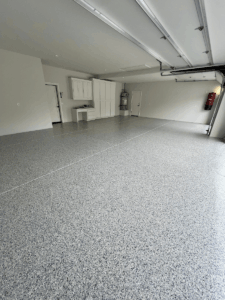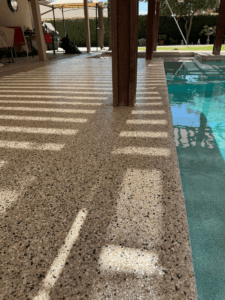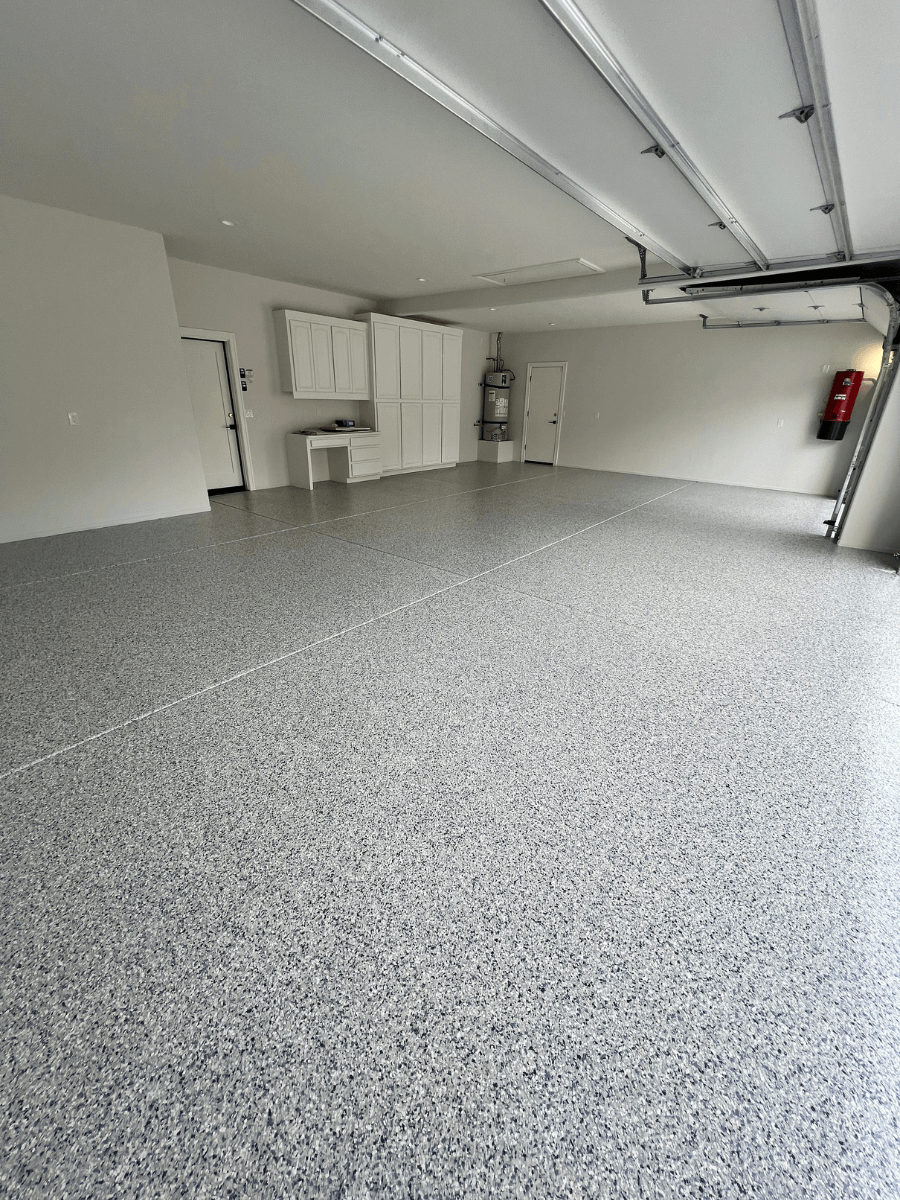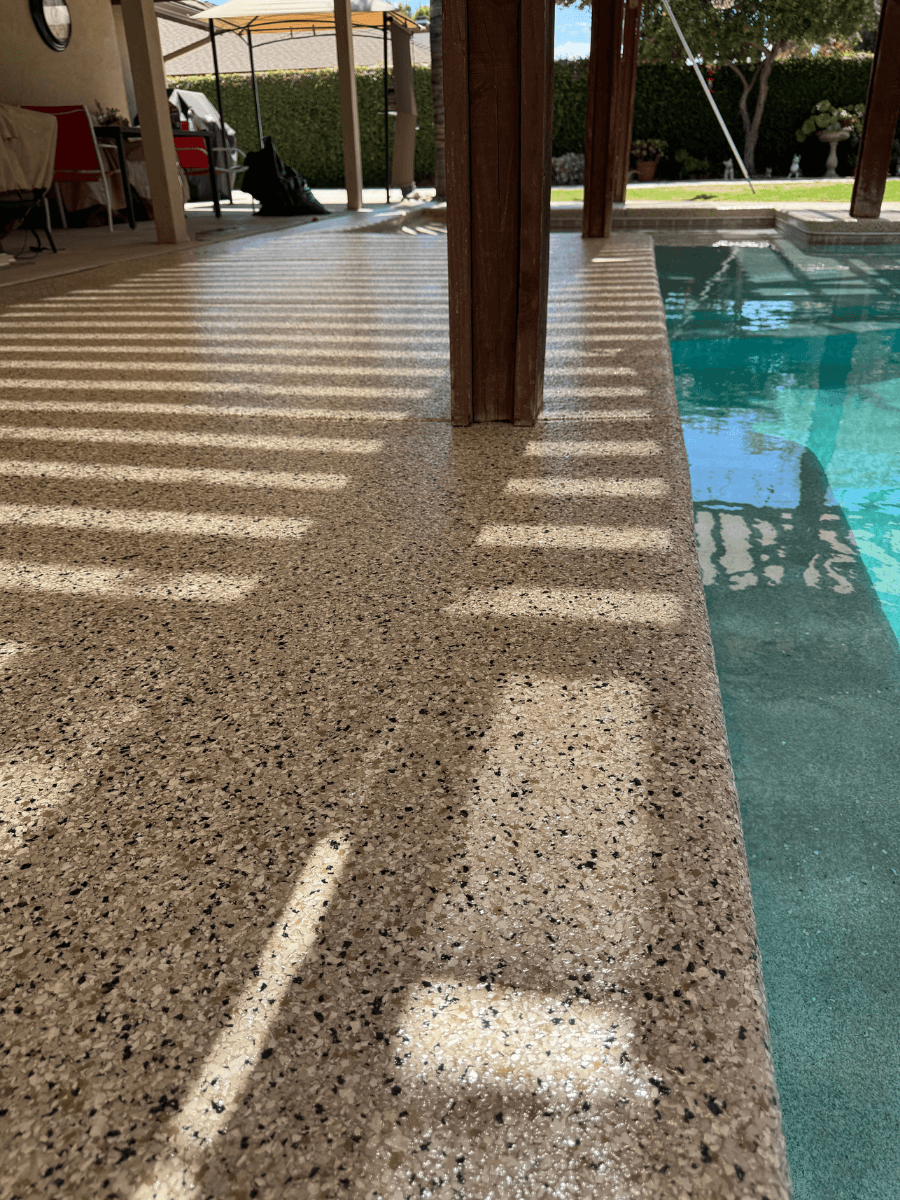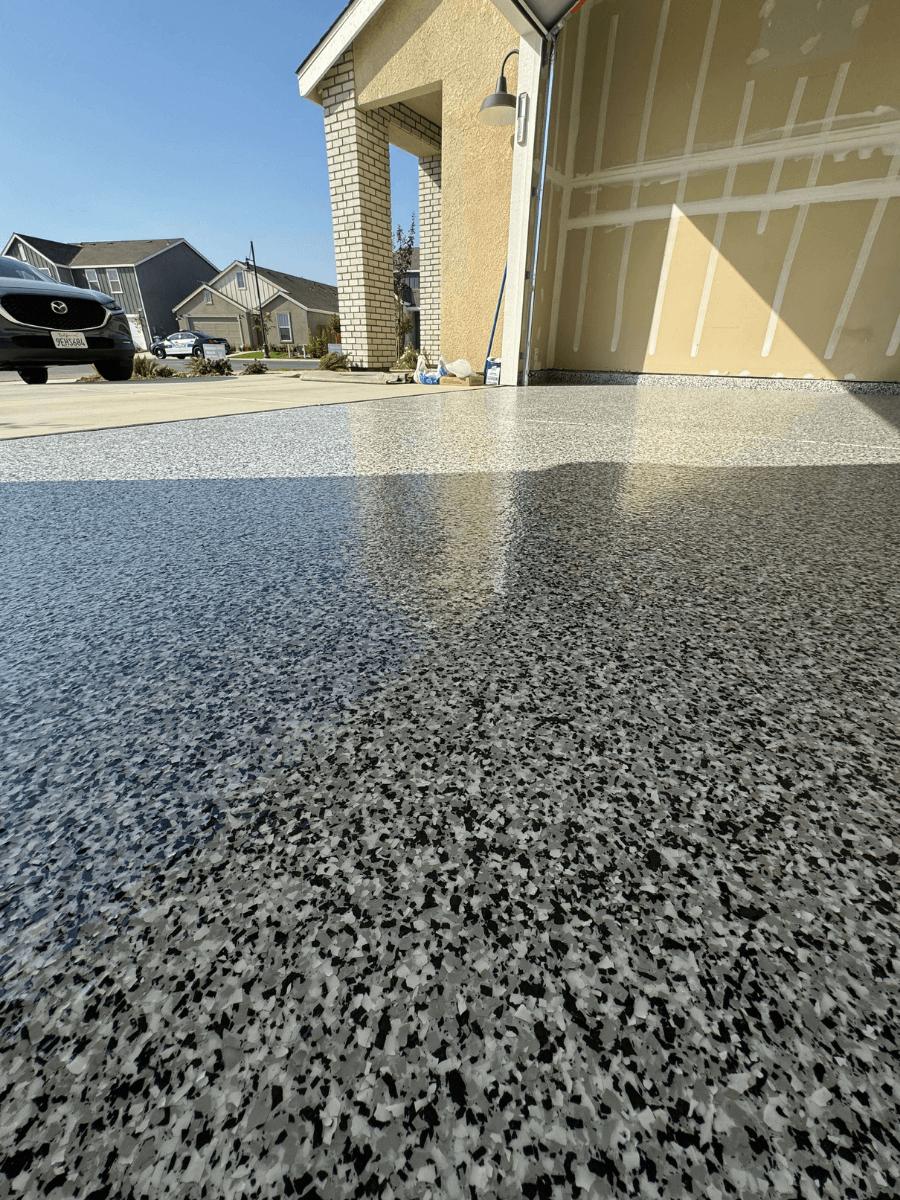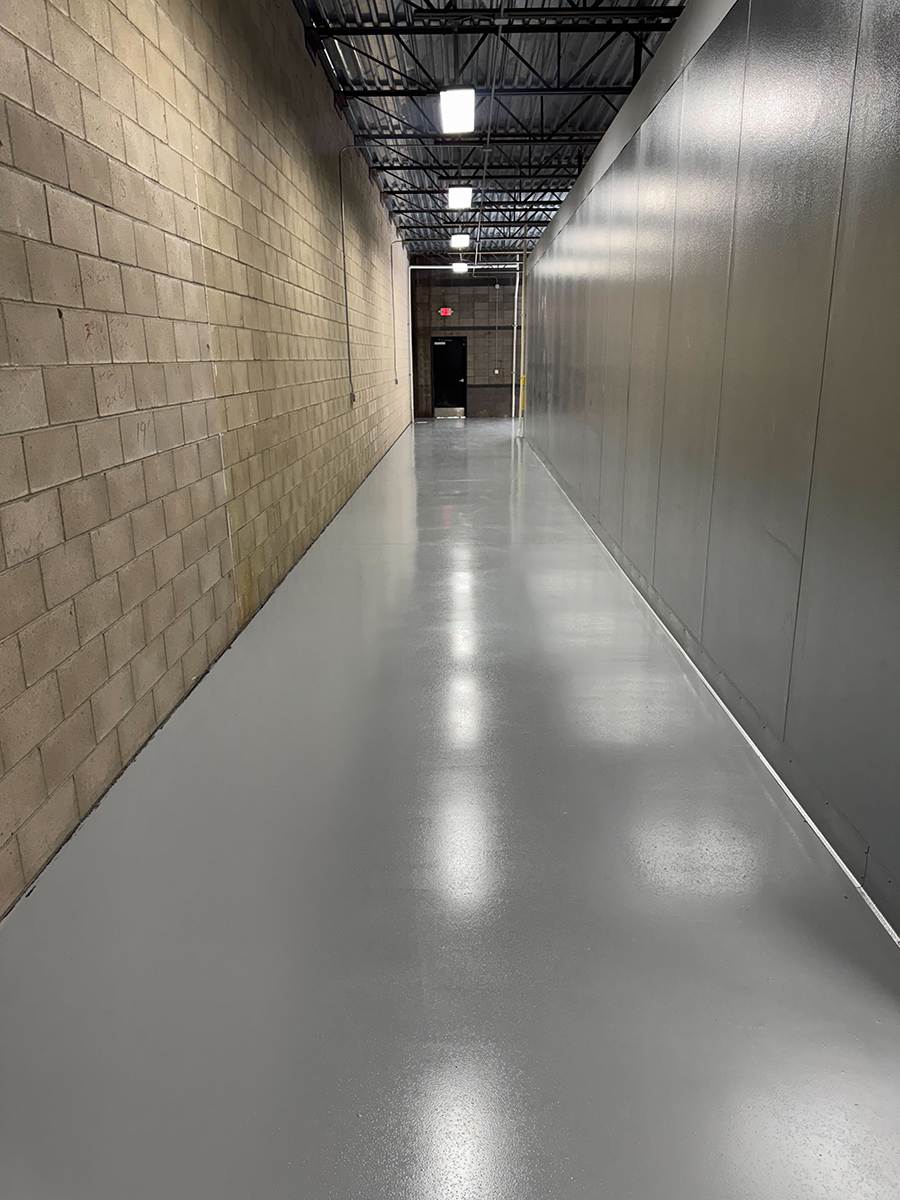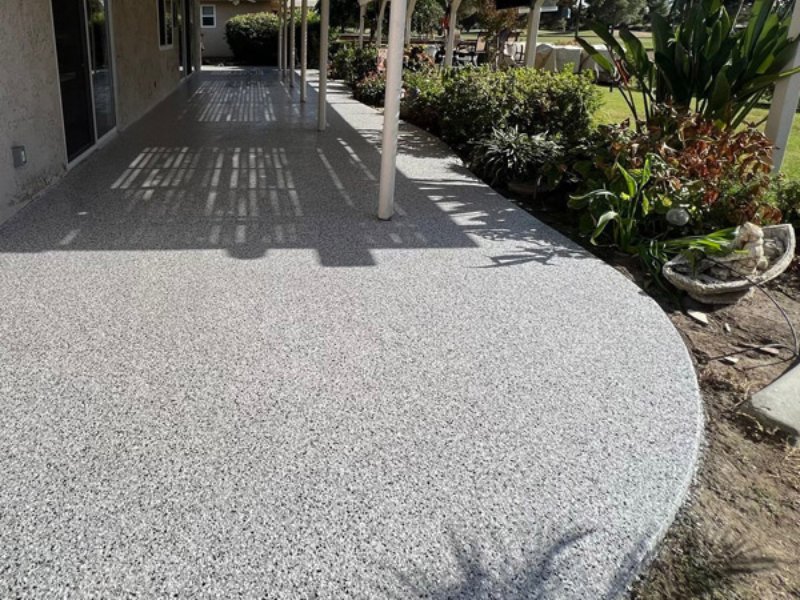Warehouse floor coatings are an essential investment for maintaining a safe, durable, and professional workspace. Whether your floor is coated with epoxy, polyurethane, or another material, regular maintenance is key to preserving its longevity and functionality. Without proper care, even the most robust coatings can wear down prematurely, leading to costly repairs or replacements. Below are practical maintenance tips to help you extend the life of your warehouse floor coating.
Keep Floors Clean and Free of Debris
Why It Matters:
Dust, dirt, and debris can act like sandpaper under the weight of forklifts, pallet jacks, and foot traffic, causing scratches and wearing down the coating. Additionally, debris buildup can pose safety risks to employees.
How to Maintain:
- Sweep floors daily using a soft-bristle broom or a mechanical sweeper.
- Use a high-quality dust mop or microfiber pad to pick up fine particles.
- Vacuum hard-to-reach areas regularly to prevent the accumulation of dirt.
Pro Tip: Consider using entrance mats to minimize the amount of dirt tracked into the warehouse.
Address Spills Immediately
Why It Matters:
Chemicals, oils, and other liquids can damage certain types of floor coatings if left to sit. Even if the coating is resistant to chemicals, prolonged exposure can weaken its protective layer.
How to Maintain:
- Clean up spills as soon as they occur using absorbent materials or mops.
- Use a pH-neutral cleaning solution for routine cleaning to avoid damaging the coating.
- Avoid harsh chemicals unless the coating is specifically rated for chemical resistance.
Pro Tip: Keep a spill-response kit readily available for employees to act quickly in case of leaks or accidents.
Protect High-Traffic Areas
Why It Matters:
Areas that experience heavy traffic from machinery or foot movement are prone to faster wear and tear. Protecting these zones can significantly extend the lifespan of your floor coating.
How to Maintain:
- Install rubber mats or runners in high-traffic zones.
- Use protective pads under heavy equipment to prevent gouging or cracking.
- Rotate traffic patterns if possible to distribute wear more evenly.
Pro Tip: Designate specific routes for forklifts and machinery to minimize unnecessary stress on coated surfaces.
Perform Regular Inspections
Performing regular inspections will allow you to address any potential problems before they get worse. Our pals at Robex have provided us with how tips on how to perform your regular inspections.
Why It Matters:
Small cracks, chips, or worn areas can worsen over time if not addressed promptly. Regular inspections allow you to catch and repair minor issues before they become major problems.
How to Maintain:
- Walk through the warehouse weekly to look for signs of damage, including scratches, discoloration, or bubbling.
- Check edges and seams, as these areas are particularly vulnerable to wear.
- Document any issues and schedule repairs as needed.
Pro Tip: Keep a maintenance log to track inspections, cleaning schedules, and repairs.
Use Proper Equipment and Techniques
Why It Matters:
Using the wrong cleaning equipment or techniques can damage your floor coating instead of preserving it. Abrasive tools or harsh chemicals can strip the coating, leaving it vulnerable to further wear.
How to Maintain:
- Use non-abrasive cleaning pads and soft-bristle brushes.
- Avoid heavy-duty cleaning machines unless they are specifically designed for coated floors.
- Ensure mop heads and cleaning pads are clean to prevent spreading dirt or grit.
Pro Tip: Invest in a walk-behind or ride-on floor scrubber with soft pads for efficient, safe cleaning of large areas.
Monitor Temperature and Humidity
Why It Matters:
Extreme temperatures and high humidity can affect the durability of some coatings, causing them to expand, contract, or lose adhesion over time.
How to Maintain:
- Keep your warehouse climate-controlled to maintain consistent temperature and humidity levels.
- Use dehumidifiers in humid environments to reduce moisture buildup.
- Avoid exposing floors to prolonged sunlight through large windows, as UV rays can degrade certain coatings.
Pro Tip: Ensure proper ventilation to prevent condensation, especially in areas prone to temperature fluctuations.
Train Employees on Best Practices
Why It Matters:
Even with the best maintenance plan in place, improper use of the warehouse floor can lead to unnecessary damage. Employees play a critical role in keeping floors in good condition.
How to Maintain:
- Train staff on the importance of floor maintenance and safe equipment handling.
- Encourage proper spill cleanup and reporting of damage.
- Set guidelines for moving heavy machinery and materials to avoid dragging or dropping them on the floor.
Pro Tip: Create a clear maintenance checklist for employees to follow during daily operations.
Reapply Topcoat as Needed
Why It Matters:
Over time, the topcoat of your floor coating will naturally wear down, especially in high-traffic areas. Reapplying the topcoat can restore the protective layer and extend the life of the underlying coating.
How to Maintain:
- Schedule periodic recoating based on the manufacturer’s recommendations and your warehouse’s usage.
- Hire professionals to ensure the reapplication process is done correctly.
- Choose a high-quality topcoat that matches the original coating for consistent performance.
Pro Tip: Timing is key—don’t wait until the coating is completely worn down before scheduling a reapplication.
Prevent Impact Damage
Why It Matters:
Heavy impacts from dropped tools, pallets, or equipment can chip or crack the coating, leaving the floor vulnerable to further damage.
How to Maintain:
- Use forklift padding and protective bumpers.
- Encourage employees to handle materials with care.
- Install corner guards and edge protectors to minimize impact damage in vulnerable areas.
Pro Tip: For areas prone to impact, consider using a thicker or reinforced coating during the initial application.
Plan for Professional Maintenance
Why It Matters:
While regular cleaning and inspections can go a long way, professional maintenance ensures your floor coating stays in peak condition for years. Experts can perform deep cleaning, resealing, and repairs that go beyond routine care.
How to Maintain:
- Schedule professional cleaning and maintenance annually or biannually.
- Choose a reputable service provider with experience in warehouse floor coatings.
- Discuss long-term maintenance plans with the experts to align with your warehouse’s needs.
Pro Tip: Regular professional maintenance can save you money in the long run by preventing costly repairs or premature replacement.
Conclusion
Extending the life of your warehouse floor coating requires consistent care, proactive inspections, and adherence to best practices. By keeping floors clean, addressing issues promptly, and protecting high-traffic areas, you can maximize your investment and maintain a safe, efficient workspace. Whether you handle maintenance in-house or enlist professional help, a well-maintained floor coating will serve your warehouse for years to come.



